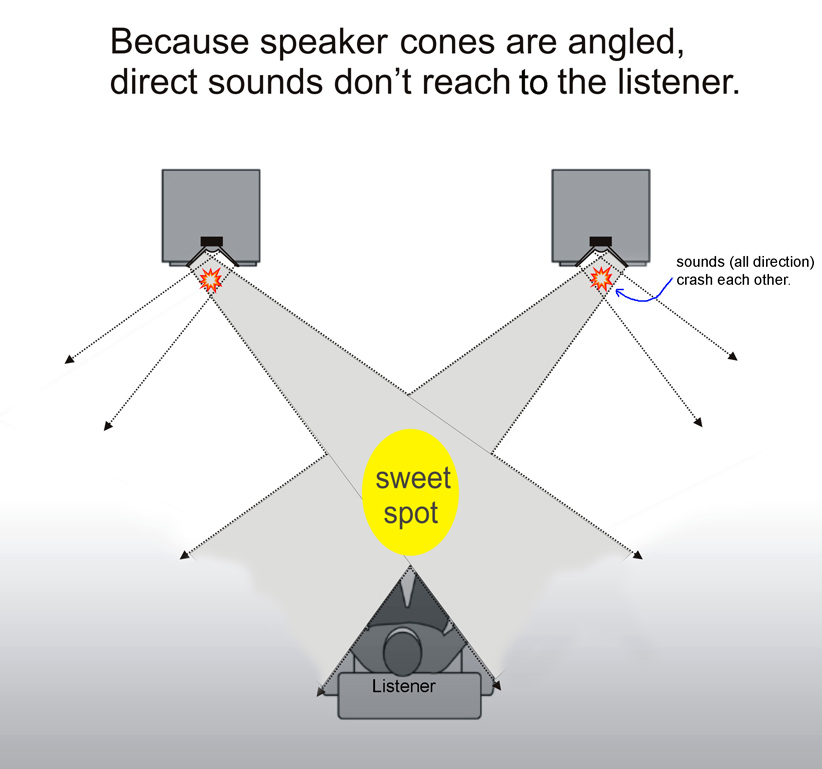The direct sounds from front speakers to a listener influence the sound-stage and sound images the most. Understanding the direction of direct sounds will help your speaker set up. The sweet spot should be around ears. Alex/Wavetouch

Radical toe in once more
Hi all. I have bi-directional floorstanders, two way speakers with identical treble and woofer on the front and the back. Half of the sound goes to the front drivers, half to the back.
The toe-in of this type of speaker is very influenced by how the back sound wave and the reverberant sound behaves. These speakers often sound good with radical toe-in due to better room acoustics with a longer back wave towards the corners.
This is a huge topic, and my question is more restricted: what happens with the front firing sound?
Is there an "inherent" problem with radical toe in, when the main sound from the front drivers cross in front of the listener, instead of the more conventional setup where the crossing point is behind the listener - and if so, what?
Is this (potential) minus factor in fact low, if the listener is just a foot or so back of the crossing point?
@atmasphere - the reason why conventional toe in also works quite well in my room is that it is quite wide, sidewall reflections are not so disturbing. |
Maybe I should clarify that I am testing toe-in in a living room with natural living room damping from furniture, book and record shelves, etc, as well as carpets and some ceiling damping. I don't want to overdamp and have removed some measures. The speakers are designed to benefit from an ordinary, not heavily damped room. They should stand well into the room, with much space to breathe also to the sides. They should then be toed in for optimal performance, considering the effects of changing the sound from the back as well as the front drivers. They are made to sound spectrally correct, the timbre should be similar from wherever in the room you hear them. They sound best - I think - with radical toe in since this increases the time gap between direct and indirect / reverberant sound. Although maybe with some penalty regarding the front firing sound. The jury is still out. But with the axes crossing only a foot or so in front of me, it seems a small minus. |
I find that I can use my listener chair as a volume control. Moving it backwards means less volume. It also means that I move back some seats in the listener hall, or the sound space of the recording. If I move my chair towards the speakers, I feel more like I am sitting in the front seat section, besides the greater volume. This is with the radical toe-in of the speakers. The effect is similar but weaker with conventional toe-in. The listening chair position is also a kind of tone control. The closer I sit to the central axis of the direct sound the greater is the perceived output of the treble. This is easy to hear. The whole speaker becomes too beamy, insistent, in your face. I guess this is why most speaker manufacturers advice NOT sitting in the crosspoint. But adjust with toe-in. When I do some gym, between the speakers, with my ears just few feet in front, they almost sound like my best headphones. They change character a lot, depending on position. |